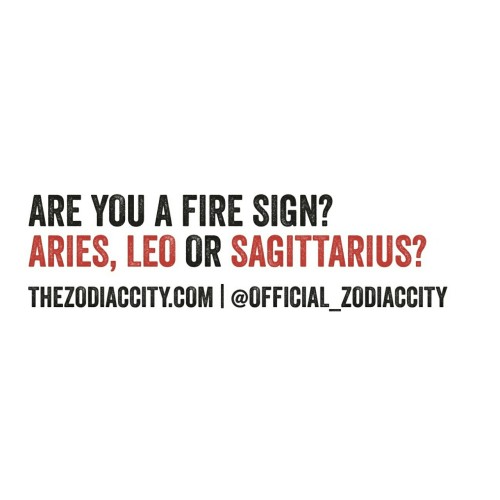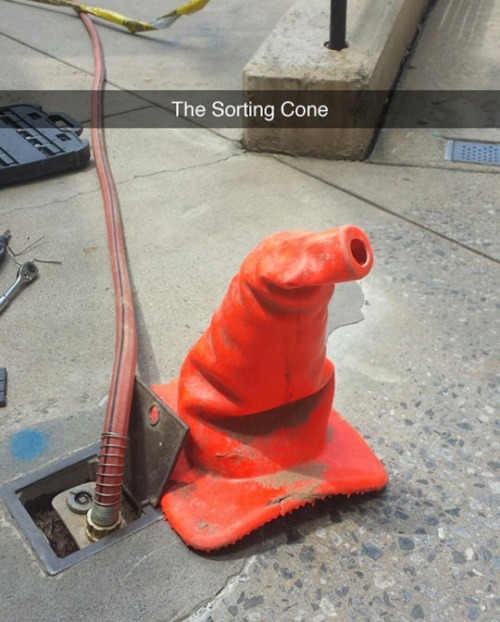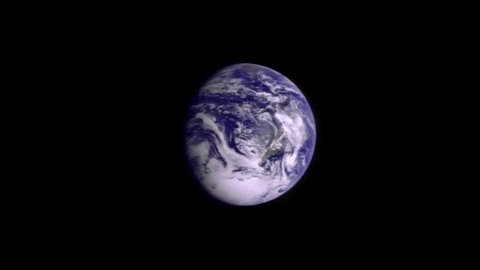What’s Up For March 2016?
What’s Up for March 2016?
In March, Jupiter, it’s moons and moon shadows will all be visible in the sky. Find out when and where to look up:

Jupiter dominates the evening sky this month, rising at sunset and setting at dawn. On March 8, Jupiter reaches what is called “opposition”. Imagine that Jupiter and the sun are at opposite ends of a straight line, with the Earth in between. This brings Jupiter its closest to Earth, so it shines brighter and appears larger in telescopes.

On the nights of March 14 – 15, March 21 – 22 and March 29, two of Jupiter’s moons will cross the planet’s disk.

When the planet is at opposition and the sun shines on Jupiter’s moons, we can see the moon’s shadow crossing the planet. There are actually 11 of these double shadow transits in March!

The next six months will be awesome times for you to image Jupiter when it’s highest in the sky; near midnight now, and a little earlier each night through the late summer.
Even through the smallest telescopes or binoculars, you should be able to see the two prominent belts on each side of Jupiter’s equator made up of the four Galilean moons: Io, Europa Ganymede and Calisto. If you have a good enough view, you may even see Jupiter’s Red Spot!

Our Juno spacecraft will arrive at Jupiter on July 4th of this year and will go into orbit around the giant planet. Right now, the Juno mission science team is actively seeking amateur and professional images of the planet. These images are uploaded to a Juno website, and the public is invited to discuss points of interest in Jupiter’s atmosphere.

Locations will later be voted on and the favorites will be targets for JunoCam, the spacecraft’s imaging camera. Once JunoCam has taken the images, they’ll be posted online. Imaging participants can then process these raw mission images and re-upload them for others to view.

Make sure to follow us on Tumblr for your regular dose of space: http://nasa.tumblr.com
More Posts from Allisonkitten and Others

🔥

Zodiac Fire Signs | Are you following http://thezodiaccity.com?

The Orion Nebula.
Credit: NASA, ESA and the Hubble Heritage Team (STScI/AURA)

7 Facts That Will Make You Feel Very Small

Earth, our home planet, is the fifth largest planet in our solar system and the only planet we know of where life exists. Even though Earth seems extremely large to us, it is actually a tiny spec in the vast expanse of the universe. Here are 7 space facts that will make you feel very small.

1. Our sun is one of at least 100 BILLION stars, just in the Milky Way. Scientists calculate that there are at least 100 billion galaxies in the observable universe, each one brimming with stars. There are more stars than grains of sand on all of Earth’s beaches combined.
In 1995, the first planet beyond our solar system was discovered. Now, thousands of planets orbiting sun-like stars have been discovered, also known as exoplanets.

2. The Milky Way is a huge city of stars, so big that even at the speed of light (which is fast!), it would take 100,000 years to travel across it.

3. Roughly 70% of the universe is made of dark energy. Dark matter makes up about 25%. The rest — everything on Earth, everything ever observed with all of our instruments, all normal matter adds up to less than 5% of the universe.

4. If the sun were as tall as a typical front door, Earth would be the size of a nickel.

5. The sun accounts for almost all of the mass in our solar system. Leaving .2% for all the planets and everything else.

6. Edwin Hubble discovered that the Universe is expanding and that at one point in time (14 billion years ago) the universe was all collected in just one point of space.

7. Four American spacecraft are headed out of our solar system to what scientists call interstellar space. Voyager 1 is the farthest out — more than 11 billion miles from our sun. It was the first manmade object to leave our solar system. Voyager 2, is speeding along at more than 39,000 mph, but will still take more than 296,000 years to pass Sirius, the brightest star in our night sky.
Feeling small yet? Here’s a tool that will show you just how tiny we are compared to everything else out there: http://imagine.gsfc.nasa.gov/features/cosmic/earth.html
Make sure to follow us on Tumblr for your regular dose of space: http://nasa.tumblr.com

Phahahaha :P ~luna<3
Fun Facts About Mars

Mars is a cold desert world, and is the fourth planet from the sun. It is half the diameter of Earth and has the same amount of dry land. Like Earth, Mars has seasons, polar ice caps, volcanoes, canyons and weather, but its atmosphere is too thin for liquid water to exist for long on the surface. There are signs of ancient floods on the Red Planet, but evidence for water now exists mainly in icy soil and thin clouds.

Earth has one, Mars has two…moons of course! Phobos (fear) and Deimos (panic) are the Red Planet’s two small moons. They are named after the horses that pulled the chariot of the Greek war god Ares, the counterpart to the Roman war god Mars.

The diameter of Mars is 4220 miles (6792 km). That means that the Red Planet is twice as big as the moon, but the Earth is twice as big as Mars.

Since Mars has less gravity than Earth, you would weigh 62% less than you do here on our home planet. Weigh yourself here on the Planets App. What’s the heaviest thing you’ve ever lifted? On Mars, you could have lifted more than twice that! Every 10 pounds on Earth only equals 4 pounds on the Red Planet. Find out why HERE.

Mass is the measurement of the amount of matter something contains. Mars is about 1/10th of the mass of Earth.

Mars and Earth are at their closest point to each other about every two years, with a distance of about 33 million miles between them at that time. The farthest that the Earth and Mars can be apart is: 249 million miles. This is due to the fact that both Mars and Earth have elliptical orbits and Mars’ orbit is tilted in comparison with the Earth’s. They also orbit the sun at different rates.

The temperature on Mars can be as high as 70 degrees Fahrenheit (20 degrees Celsius) or as low as about –225 degrees Fahrenheit (-153 degrees Celsius). How hot or cold the surface varies between day and night and among seasons. Mars is colder than Earth because it is farther from the sun.

You know that onions have layers, but did you know that Mars has layers too? Like Earth, Mars has a crust, a mantle and a core. The same stuff even makes up the planet layers: iron and silicate.

Ever wonder why it’s so hard launching things to space? It’s because the Earth has a log of gravity! Gravity makes things have weight, and the greater the gravity, the more it weights. On Mars, things weigh less because the gravity isn’t as strong.

Take a deep breath. What do you think you just breathed in? Mostly Nitrogen, about a fifth of that breath was Oxygen and the rest was a mix of other gases. To get the same amount of oxygen from one Earth breath, you’d have to take around 14,500 breaths on Mars! With the atmosphere being 100 times less dense, and being mostly carbon dioxide, there’s not a whole lot of oxygen to breathe in.

Mars has about 15% of Earth’s volume. To fill Earth’s volume, it would take over 6 Mars’ volumes.
For more fun Mars facts, visit HERE.
Make sure to follow us on Tumblr for your regular dose of space: http://nasa.tumblr.com
How Well Do You Know Mercury?
Mercury is the smallest planet in our solar system and is only slightly larger than Earth’s moon. To give you some perspective, if the sun were as tall as a typical front door, Earth would be the size of a nickel and Mercury would be about as big as a green pea.

Mercury is the closest planet to the sun. Daytime temperatures can reach 430 degrees Celsius (800 degrees Fahrenheit) and drop to –180 degrees Celsius (-290 degrees Fahrenheit) at night.
Here are a few fun facts about Mercury:
Mercury takes only 88 Earth days to orbit the sun
If we could stand on Mercury’s surface when it is at its closest point to the sun, the sun would appear more than three times larger than it does here on Earth
Mercury is home to one of the largest impact basins in the solar system: the Caloris Basin. The diameter of this impact basin is the length of 16,404 football fields (minus the end zones) placed end to end!
Mercury is one of only two planets in our solar system that do not have moons (Venus is the other one)
Mercury completes three rotations for every two orbits around the sun. That means that if you wanted to stay up from sunrise to sunrise on Mercury, you’d be up for 176 Earth days…you’d need a LOT of coffee!

Two missions have visited Mercury:
Mariner 10 was the first mission to Mercury, and 30 years later, our MESSENGER mission was the second to visit the planet. Mariner 10 was also the first spacecraft to reach one planet by using the gravity of another planet (in this case, Venus) to alter its speed and trajectory.

MESSENGER was the first spacecraft to orbit Mercury, The spacecraft had its own shades to protect it from the light of the sun. This is important since sunlight on Mercury can be as much as 11 times brighter than it is here on Earth. The spacecraft was originally planned to orbit Mercury for one year, but exceeded expectations and worked for over four years capturing extensive data. On April 30, 2015, the spacecraft succumbed to the pull of solar gravity and impacted Mercury’s surface.
Water Ice?
The MESSENGER spacecraft observed compelling support for the long-held hypothesis that Mercury harbors abundant water ice and other frozen volatile materials in its permanently shadowed polar craters.

This radar image of Mercury’s north polar region. The areas shown in red were captured by MESSENGER, compared to the yellow deposits imaged by Earth-based radar. These areas are believed to consist of water ice.
Mercury Transit of the Sun
For more than seven hours on Monday, May 9, Mercury will be visible as a tiny black dot crossing the face of the sun. This rare event – which happens only slightly more than once a decade – is called a transit.

Where: Skywatchers in Western Europe, South America and eastern North America will be able to see the entirety of the transit. The entire 7.5-hour path across the sun will be visible across the Eastern U.S. – with magnification and proper solar filters – while those in the West can observe the transit in progress at sunrise.

Watch: We will stream a live program on NASA TV and the agency’s Facebook page from 10:30 to 11:30 a.m. – an informal roundtable during which experts representing planetary, heliophysics and astrophysics will discuss the science behind the Mercury transit. Viewers can ask questions via Facebook and Twitter using #AskNASA. Unlike the 2012 Venus transit of the sun, Mercury is too small to be visible without magnification from a telescope or high-powered binoculars. Both must have safe solar filters made of specially-coated glass or Mylar; you can never look directly at the sun.
To learn more about our solar system and the planets, visit: http://solarsystem.nasa.gov/
Make sure to follow us on Tumblr for your regular dose of space: http://nasa.tumblr.com

My best friend is a Capricorn! Freaky...

Zodiac Capricorn Best Friend | TheZodiacCity.com
-
 visionify liked this · 1 year ago
visionify liked this · 1 year ago -
 bellveder liked this · 1 year ago
bellveder liked this · 1 year ago -
 truly-fantastic-me liked this · 1 year ago
truly-fantastic-me liked this · 1 year ago -
 wagnerrms liked this · 1 year ago
wagnerrms liked this · 1 year ago -
 sonicsoundscapes liked this · 6 years ago
sonicsoundscapes liked this · 6 years ago -
 fontyemhemzin-blog liked this · 7 years ago
fontyemhemzin-blog liked this · 7 years ago -
 cuhbwaafol-blog liked this · 7 years ago
cuhbwaafol-blog liked this · 7 years ago -
 danav liked this · 8 years ago
danav liked this · 8 years ago -
 windowtotheskyabove liked this · 9 years ago
windowtotheskyabove liked this · 9 years ago -
 booksandwillherondale liked this · 9 years ago
booksandwillherondale liked this · 9 years ago -
 khakigodsmom liked this · 9 years ago
khakigodsmom liked this · 9 years ago -
 the-bicameral-mind reblogged this · 9 years ago
the-bicameral-mind reblogged this · 9 years ago -
 the-bicameral-mind liked this · 9 years ago
the-bicameral-mind liked this · 9 years ago -
 safouane-reus liked this · 9 years ago
safouane-reus liked this · 9 years ago -
 majesticspaceblob liked this · 9 years ago
majesticspaceblob liked this · 9 years ago -
 strayedaf liked this · 9 years ago
strayedaf liked this · 9 years ago -
 wanda-maximoff18-blog liked this · 9 years ago
wanda-maximoff18-blog liked this · 9 years ago -
 jsbustaman liked this · 9 years ago
jsbustaman liked this · 9 years ago -
 starryunderwatersky liked this · 9 years ago
starryunderwatersky liked this · 9 years ago -
 sweetdarlinblr liked this · 9 years ago
sweetdarlinblr liked this · 9 years ago -
 tiffany-eg liked this · 9 years ago
tiffany-eg liked this · 9 years ago -
 maryxula liked this · 9 years ago
maryxula liked this · 9 years ago -
 khalilooo00lol-blog liked this · 9 years ago
khalilooo00lol-blog liked this · 9 years ago -
 rlgrodrigues reblogged this · 9 years ago
rlgrodrigues reblogged this · 9 years ago -
 m31apollo liked this · 9 years ago
m31apollo liked this · 9 years ago -
 claythinking liked this · 9 years ago
claythinking liked this · 9 years ago -
 crystalscale1035 reblogged this · 9 years ago
crystalscale1035 reblogged this · 9 years ago -
 warmofbees liked this · 9 years ago
warmofbees liked this · 9 years ago -
 kxowledge liked this · 9 years ago
kxowledge liked this · 9 years ago -
 cavecricket liked this · 9 years ago
cavecricket liked this · 9 years ago -
 crystalscale1035 liked this · 9 years ago
crystalscale1035 liked this · 9 years ago
Just a socially awkward college student with an interest in the celestial bodies in our universe.
279 posts